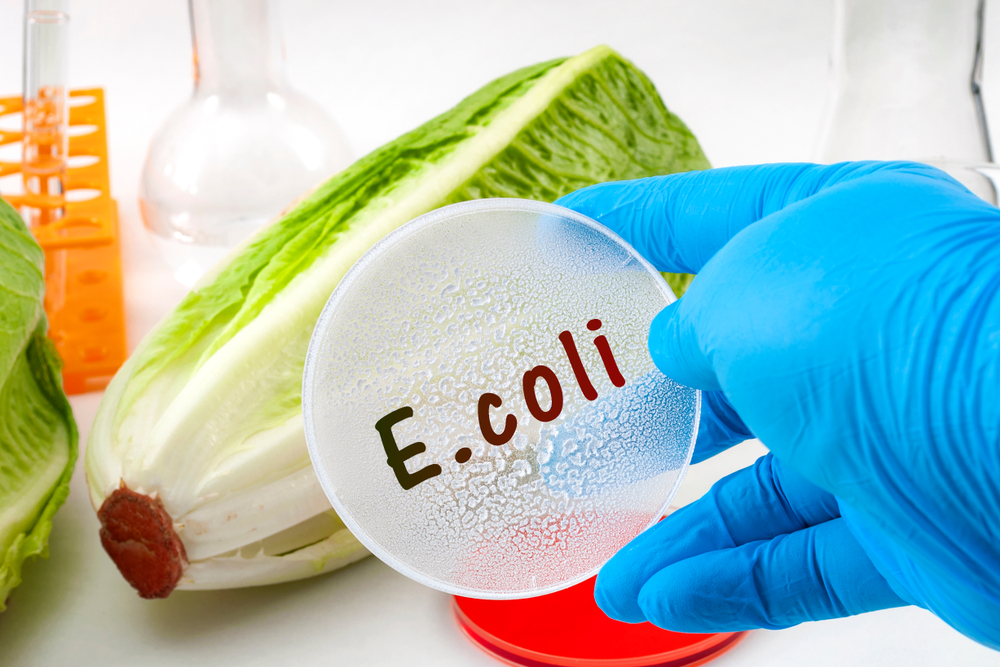Where to find E.coli in food production environments?
To ensure food safety and quality, managing end products and the production environment is crucial. Amongst the microorganisms posing a threat, Escherichia coli is a foodborne pathogen known to cause health problems such as diarrhoea, sepsis and meningitis. Contaminations with E.coli are a persistent problem that continuously threatens public health.
According to data from the US Food and Drug Administration (FDA), E. coli is consistently among the top causes of food recalls in the United States. One high-profile example of an E. coli-related food recall occurred in 2018, when romaine lettuce from the Yuma, Arizona, growing region was linked to an outbreak of E. coli infections in the US and Canada. The outbreak resulted in 210 confirmed cases of illness and five deaths. As a result, the CDC advised consumers to avoid eating romaine lettuce from the Yuma growing region. Many retailers and restaurants pulled romaine lettuce from their shelves and menus.
In 2022, French health authorities established a link between the tragic deaths of two children and the consumption of frozen pizzas made by the Buitoni brand, which Nestlé owns. As a result, the contaminated pizzas have caused 75 reported cases of serious E. coli poisoning.
The number of E. coli-related food recalls can vary significantly yearly. Sometimes, the contamination is identified before the product is distributed to consumers, and the affected batches are disposed of or treated to eliminate the bacteria. In other cases, the contamination may not be severe enough to warrant a recall, but it can still cause illness in those who consume the product. E. coli contamination in food production environments is a serious issue; however, what are the most dangerous contamination spots? Let's figure it out below.
Contamination from Livestock
Over the years, pasteurization has helped reduce the number of foodborne illnesses associated with milk and dairy products. However, certain dairy products, such as raw milk and unpasteurized cheeses, still pose a risk for E. coli infection. This is because E. coli originates from the gut of warm-blooded animals and is therefore found in livestock feces. It can therefore contaminate the milk during the milking process. When fecal matter comes into contact with the environment where primary ingredients are sourced, it contaminates the soil, water and feed, the produce and vegetables grown.
Contamination from Water
Water, for recreational use, such as swimming pools and shallow lakes, and for human consumption can contaminate E. coli. When lakes become infected, it can take weeks or months before water quality conditions improve or return to normal. Another case is when water is used to wash fruits and vegetables or to process meat and dairy products. It can easily spread E. coli throughout the food production environment. What could help to prevent contamination is proper chlorination. It can kill E. coli bacteria in swimming pools and municipal water systems, as water has been identified as the source of several E. coli outbreaks.
Contamination from People
E. coli can be transmitted between people through a fecal-oral route, which is especially common among infants and young children due to their less-developed hygiene practices. Another case is when E. coli can spread from infected individuals to their caregivers and from infected food handlers to people who consume the food they prepare. Therefore, it is essential to follow proper hygiene practices to prevent the spread of E. coli and other infectious diseases.Contamination from Equipment
In food production environments, E. coli can be found in several areas besides food contact surfaces. These areas include equipment or factory parts that could transfer contamination from one place to another, such as door handles and computer touch screens. When looking for E. coli, focusing on areas where the product is split from one zone to another is essential. For instance, in a baking operation where dry flour is used, there is a high likelihood of finding E. coli and occasionally Salmonella. When flour and other ingredients are spread, cross-contamination is possible between the raw dough preparation area and the post-baking or post-cooking areas. Pies, quiches, and other products containing raw flour, raw eggs, or raw meat before the cooking process are also areas where E. coli can be found. In addition, minimally processed meat products are likely to contain E. coli. During the 1990s and early 2000s, most E. coli O157:H7 outbreaks were due to consuming contaminated ground beef. As a result, hemolytic uremic syndrome, a severe complication arising from E. coli O157:H7 infection, was nicknamed "Hamburger Disease." As a result, outbreaks and recalls of E. coli-contaminated ground beef and other meat products continue to trouble the meat industry and the public. Improper sanitation, cross-contamination, and failure to cook meat to a high enough temperature contribute to E. coli outbreaks associated with restaurant food. Therefore, meat processors, such as those in Zurich Angst, who produce raw and cooked meat preparations, may require E. coli testing to ensure the safety of their products.
Read also: Where to find Salmonella in food production environments
Conclusion
Overall, the statistics highlight the importance of maintaining strict food safety protocols in all stages of the food production process, from farm to table. Regular testing and surveillance can help identify and contain outbreaks, and robust hygiene practices can help prevent contamination in the first place. By taking these steps, food producers can help ensure the safety and health of consumers while minimizing the risk of costly and damaging food recalls. And daily, everyone implementing proper hygiene practices, we can reduce the spread of E. coli and keep ourselves safe and healthy.

